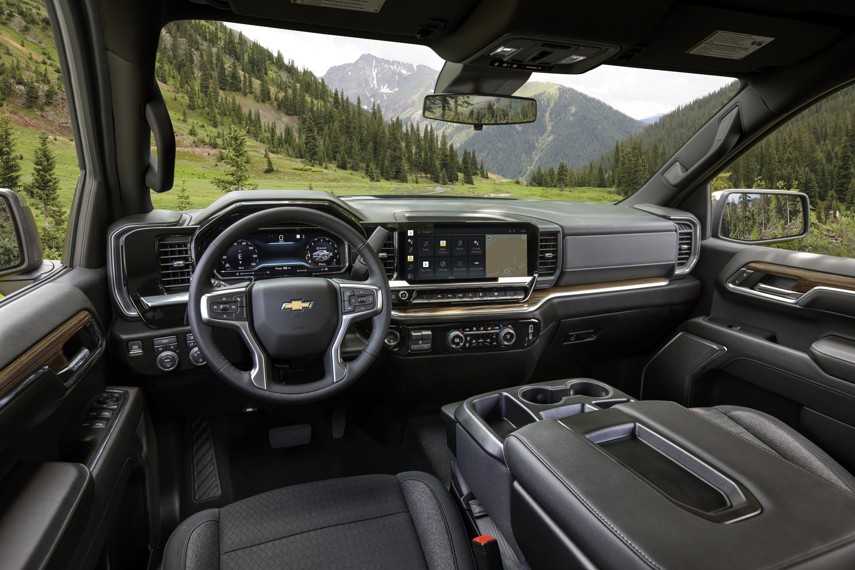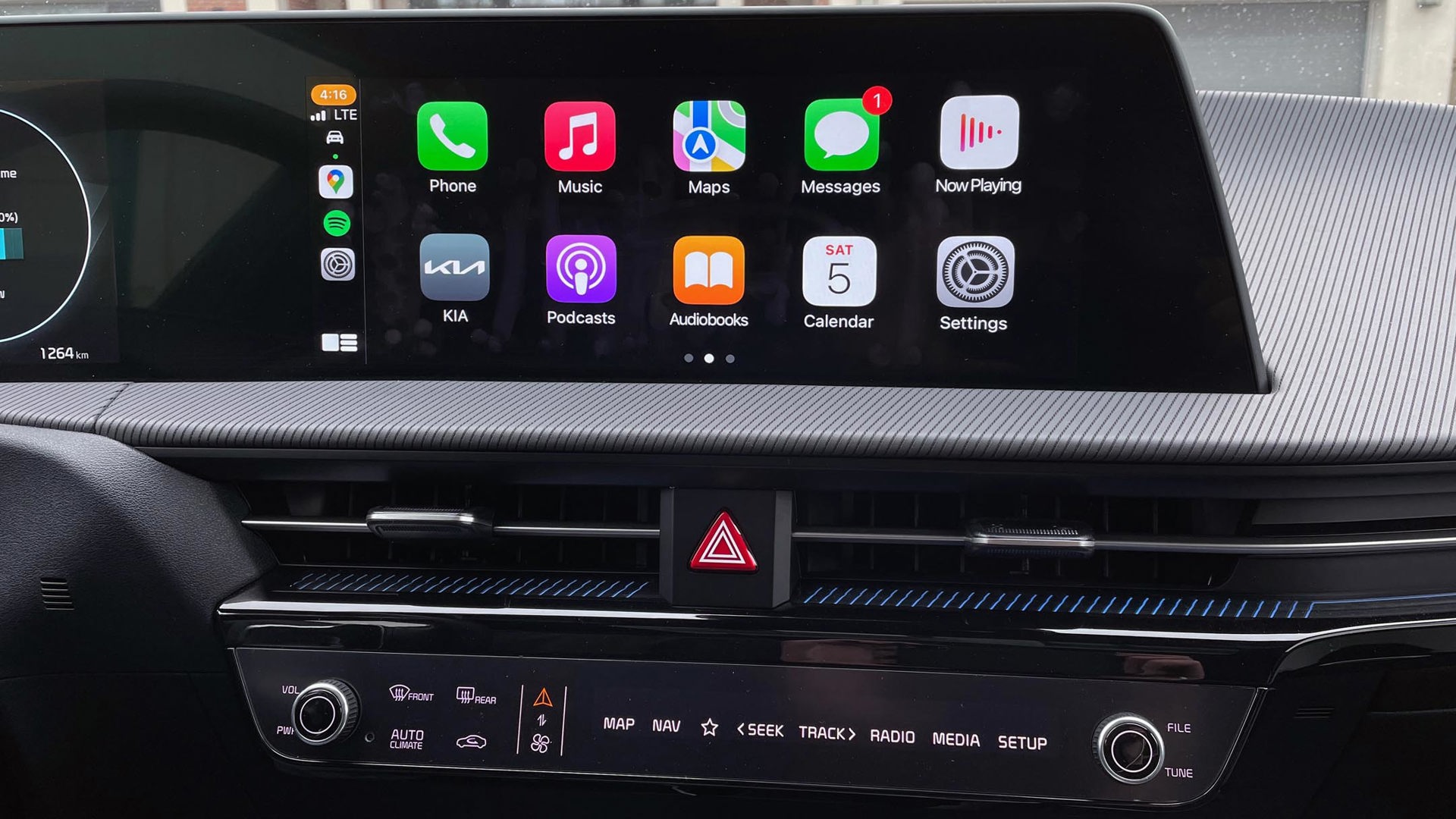Vehicles have advanced by leaps and bounds in terms of technology and capability over the past few years. With the democratization of computer chips and the increasing affordability of parts like cameras and sensors, even the least-expensive new cars on sale today have features that were the sole domain of expensive luxury vehicles just a few short years ago.
Such is the blinding pace of recent progress that your author would like to introduce his so-called 30-Year Experiment. If one were to blindfold the driver of a 1962 Chevrolet pickup and plunk them behind the wheel of a 1992 Silverado, chances are they’d be able to adapt pretty quickly. There would still be an analog speedometer in front of them, a gear selector sprouting from the column like an overgrown larch, and an FM radio at their right hand. Easy.

On the flip side, let’s take the driver of that ’92 Chevy and drop them into the cabin of a new-for-2022 Silverado High Country. They’ll be staring down the barrel of a 13.4-inch touchscreen infotainment system, active driver-assistance aids like Super Cruise, and more engine power than two of the old trucks combined. And that’s just for starters. Toss in a 12.3-inch configurable digital instrument cluster plus a by-wire gear selector and the interior would look very alien to our time-travelling driver. Let’s not even mention the futuristic Silverado EV and its bag of tricks that’s on the horizon lest we cause a temporal incident that cannot be corrected.
With all that in mind, we’ve assembled a rogue’s gallery of features you may have missed if you haven’t bought a new car in the past five years. We’ll be focusing on commonly found equipment, though there’s a very good chance you’ll see some gee-whiz luxury items before finishing the article. Buckle up and enjoy the ride – especially if you’re a time traveller from 30 years ago.
Apple CarPlay and Android Auto

While touchscreen infotainment systems have been found in vehicles on all ends of the price spectrum for the past decade, the useful inclusion of smartphone integration has really taken off in the past couple years. Gone are the days when plugging one’s smartphone into a car’s USB port resulted in on-screen gibberish or a failed connection, now replaced with the welcoming colours, user friendliness, and functionality of the phone’s native interface. As an added bonus, there are a number of affordable (sub-$30,000) vehicles with wireless Apple CarPlay and Android Auto as standard equipment.
Legible Back-up Cameras
Reverse cameras have been federally required for some time now, legislated in an effort to keep drivers from causing calamity while backing up. Originally, automakers rushed to tack these cameras onto the butts of their vehicles. Some of those first cameras had all the video quality of a potato, which didn’t do much to help make reversing safer. These days, most back-up cams have HD-quality feeds on which one could either count the stones in their driveway or film a Hollywood drama.
Cabin Comforts

Gone are the days when the term “penalty box” could be applied to an entry-level car with any sort of sincerity. The vast majority of new vehicles on sale today are equipped with the likes of air conditioning, power windows, heated seats, and the aforementioned infotainment systems. Some of this comes down to a phenomenon called economies of scale, a marvel in which it is actually cheaper (in the long run) to simply equip all trims of a particular vehicle with power windows instead of designing two different door cards – one for manual winders and one for electric switches. Streamlining production is also a priority, so placing the same seats in every car could cut the amount of time assembling it by a few seconds; in a world where time means money, it’s a tack many automakers feel is worth making.
Active Safety Features
When I was learning how to drive, it was necessary to determine if a vehicle had anti-lock brakes (ABS), since the lack thereof would dramatically change the way a person would hammer the brakes in an emergency situation. These days, not only are features like ABS and stability control standard (and expected) but many manufacturers are including items such as adaptive cruise control and lane-keeping assist even on their base models. Part of that decision can be attributed to the economies of scale mentioned earlier, but there is a case to be made that the price of this technology has shrunk to a degree where it’s feasible to include these items into all trims.
Useful Voice-Activated Systems

It wasn’t too many years ago I could completely befuddle a voice-activated system with a few simple commands. Uttering “Call Patricia” would reliably result in a response of “Calling towing services” or “Calling 5-4-2-1-8-star” or “Transferring funds.” It was awful, though my thick Maritime accent may have contributed to the problem. These past few years have seen marked strides in the ability of these systems to comprehend my mouthful of marbles, contributing to a new propensity of actually using this feature in the manner for which it was designed. Pushing that little button on the steering wheel no longer results in a world of frustration, and some car companies have even programmed their systems to listen for key activation words such as “Hey Mercedes.” Many of these systems can now understand conversational language and don’t require you to study the accepted commands to actually take advantage of this useful feature.
Power Trips
In the bad old days, even the most expensive of luxury sedans could barely wheeze their way to highway speed, and so-called performance vehicles seemed to suffer from acute cases of emphysema. The hairy chested 5.0L Mustang of the early 1990s, an object of desire for many gearheads of the era, could only muster 225 horsepower from its stock V8 engine. Today, a V6-powered Toyota Camry makes more than 300 horses, to say nothing of what’s fuelling the fires of most modern minivans and hybrid-powered crossovers.

